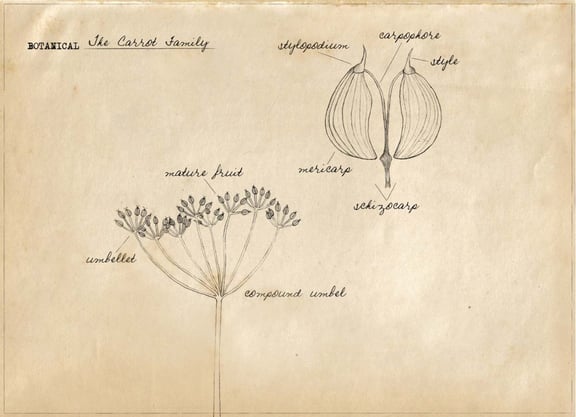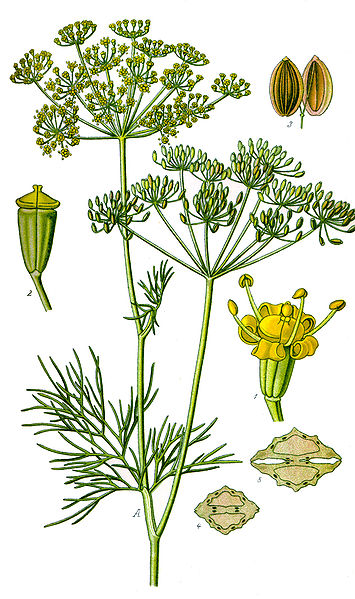Let's take a closer look at the Carrot Family!
Apiaceae – The Carrot Family
(a-pee-AY-see-ee)
Be humble with the umbel! This family includes delicious food plants, wonderful medicines, as well as deadly poisons – and many look very much alike, especially in leaf and flower! Never use a wild Apiaceae plant without 100% positive identification.
If you are interested in learning more about plants in this family that grow near you, I highly recommend finding a good botanical key for your region and practicing without picking, or consult a local botanist whenever possible, until you become experienced at keying out plants. It's really fun to identify these herbs, but takes careful study.
Identification Tips
Inflorescence - Small flowers in umbels or compound umbels. Umbels are inflorescences with the pedicels (individual flower stalks) arising at a common point, like an umbrella. Compound umbels have secondary umbellets arising from the the primary rays.
Leaves - Often dissected to compound
Flowers - Generally, five petals and five stamens
Fruits - Mature fruit is a schizocarp that splits into two one-seeded mericarps. Each species differs in texture and can be ribbed and/or winged, and have stylopodiums of varying sizes to obsolete or nearly so.
Food and Medicine
This family includes celery, parsnip, fennel, cumin, anise, parsley, caraway, dill, Queen Anne’s lace, angelica, osha, giant cow parsnip, water hemlock, and poison hemlock.
Medicinally, many of the plants in this family are prized for their warming aromatic properties, especially the seeds and roots. These aromatics are most often used to stimulate the digestive system (fennel, cumin, caraway), reproductive system (angelica), and the respiratory tract (osha).
As food, the leaves (parsley, dill, cilantro), roots (parsnip, carrot, celeriac), seeds (coriander, anise, fennel, cumin, caraway), and other vegetative parts (celery and fennel) are used. Although, again, some plants in this family are very poisonous!
Topically, organic carrot seed essential oil from the seeds of the Daucus carota, also known as Queen Anne's lace or wild carrot, is used in facial serums and creams created for dry or mature skin.
For more in the Basic Botany Series see:












